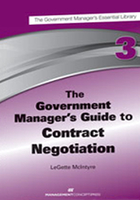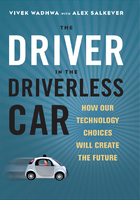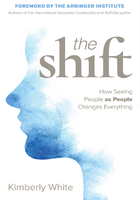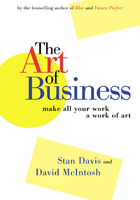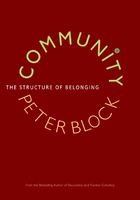To live is to risk. Risk-taking is as essential to life as breathing. It is the oxygen of such things as innovation, entrepreneurialism, leadership, wealth creation, and high adventure. Without risk, there can be no scientific progress, economic expansion, or community activism. At a more personal level, remove risk and there is no personal growth, career advancement, or spiritual development (faith, after all, is a big risk). Personally and collectively, all progress, advancement, and momentum depend on risk. Like air, it is both nourishing and life-sustaining. And, like change, risk is constant, inescapable, and inevitable.
To risk is to live. As a vehicle to personal progress, taking risks is the surest way to get from where you are to where you want to be. The most fulfilling times in your life—the times you felt most alive—have undoubtedly been when you surprised yourself by doing something you never imagined you could, something hard, something scary.
Though most of us have enjoyed the accompanying rewards of an intelligently taken risk, most of us have crashed-'n-burned under an ill-considered one as well. By definition, to face risk is to be vulnerable and exposed to harm. Consequently, we spend a lot of time trying to avoid risk by “playing it safe.” Chances are, anytime you have passed up a big opportunity, stayed in an unsatisfying situation, or failed to stick up for yourself, avoiding risk had a lot to do with your behavior.
In a world that continually reminds us about how unsafe it is, it is difficult to maintain a “play it safe” approach. From terrorist threats, to stock market gyrations, to corporate implosions, we are buffeted by the reckless risks of others. In an increasingly compressed and frenetic world, we are like billiard balls being smacked around in somebody else's pool-hall hustle.
Ironically, those who play it safe may be in the greatest danger. When we don't take risks we get stuck in a rut of safety. Over time, we become trapped inside our own life, like a pearl confined to its shell. Life becomes stale and boring. We grow resentful at ourselves for letting our grand passions languish. We tell ourselves, there's got to be something more out there for me. But we know we'll never find it unless we take more risks.
Risk or Be Risked Upon
Given risk's inevitability and its central role in living a fulfilled life, combined with the realities of an increasingly risk-intense world, knowing how to take risks should be a part of everyone's core life curriculum. Rather than let risks be inflicted on you by happenstance, today's realities dictate that you learn to initiate them yourself. As a friend of mine likes to say, “You're either part of the bulldozer, or you're part of the pavement.”
Fortunately, “being part of the bulldozer” does not mean you have to act like it. Unlike many of the risks that are imposed on you from the outside, the risks you take can be anchored to steadfast principles that serve to strengthen your life instead of undermine it.
What This Book Is About
Right Risk is about taking more deliberate and intentional risks in an increasingly complex world. It is about all the things that happen to you when you are planning for, engaging in, or running from, a risk. It aims to answer such questions as: How do I know which risks to take and which to avoid? How do I balance the need to take more risks with the need to preserve my safety? How do I muster up the courage to take risks when it is so much easier not to? How do I confront all those people who keep telling me what a mistake it would be to take the risk? And, most importantly, How do I make risk-taking less of an anxiety-provoking experience? (You'd probably take more risk if you just plain enjoyed it more, right?)
Right Risk aims to help you make smart and courageous choices, by taking risks that most reflect your personal value system, or what I call “Right Risks.” Right Risks are as unique to the risk-taker as a fingerprint. They are those that, regardless of outcomes, are always deemed successful because they are taken with a clean conscience and clear calling. They are at once deliberate, life-affirming, and closely aligned with one's deepest core values. Right Risks stand for something.
We face Right Risk opportunities when deciding whether or not to get married, have children, or confront a loved one. Also whenever we are considering joining a social cause, converting to a different religious denomination, switching political parties, or marrying someone outside our own race or ethnicity. In our work lives we face Right Risk decisions when we grapple with whether to sign on for a position that is beyond our skills, accept an overseas assignment, expose a company impropriety, or elevate a groundbreaking but tradition-defying idea. For better or for worse, the choices we make in such instances can have enduring consequences.
If you are still unclear as to what this book is about, take a moment and reflect on these two things:
The greatest risk you've ever taken.
The risk you've always wanted to take but have been too afraid to do so.
In other words, this book is about you and the big risk decision that you are grappling with. To risk or not to risk, that is always the question.
What This Book Is Not About
Much of what has been written about risk deals with risk management and comes from actuaries and statisticians, primarily in the insurance industry. In that arena, risk is a four-letter word, a thing to be avoided, controlled, or reduced. It is dealt with rationally, impersonally, and with a great deal of caution. But it is a mistake to universally apply the risk management ethos to every risk endeavor. The question is: why are we taking all our advice about risk-taking from people who notoriously avoid risk? When we do, we put an overemphasis on the word risk often to the exclusion of the word taking, and our posture becomes one of risk avoidance. Isn't it time for a book about risk-taking written from a risk-taker's vantage point?
Right Risk offers a new set of risk-taking principles that aim to balance caution with courage, sensibility with spiritedness. Unlike risk management books, the emphasis here is on risk-taking as a verb, an action, something you do. Thus Right Risk comes with a new presupposition: that risk-taking is every bit as important, if not more so, than risk-mitigation.
How I Became Acquainted with Risk
I am an ordinary man who spent seven years taking extraordinary risks. From 1984 to 1991, leaping from risk's precipice was my job—literally. During that time, I performed over 1500 high dives from heights that scaled to 100 feet, while traveling throughout the world as a member of the U.S. High Diving Team. I am not an Olympian. Contrary to popular belief, high diving is not an Olympic sport. In the Olympics, the competition stops at 10 meters, roughly 33 feet. Our lowest high dive (to use an oxymoron) began at 60 feet, and most were performed at the life-threatening height of 27 meters, or roughly 100 feet. Last time I checked, the world record stood at 187 feet. The diver, a Swiss named Oliver Farve, broke his back in two places. High diving was an “extreme” sport before the term was coined.
The high dive was not the only risk my comrades and I took as part of an aquatic entertainment production. We also performed dangerous springboard stunts called dillies, dives that two divers perform together. Dillies are aerial acrobatics, like the “Horse & Rider,” where one diver does a reverse somersault landing on the back of another in mid-air, or the “Baby Catch,” where one diver runs into the arms of another, pushing both into a conjoined somersault, one flipping backward, the other forward. While dillies were crowd-pleasers, they were also dangerous. One misstep and both divers could end up in wheelchairs.
The best example of the extreme risks I took during my years as a high diver is the 300 dives performed as a petroleum-fueled alter ego. All forms of entertainment require a grand finale and ours was truly spectacular. Each evening we would dim the lights of the aqua-theater and await the arrival of a high-octane superhero who came dressed in a cape drenched with gasoline. With the striking of a match, an ordinary high diver was transformed into Captain Inferno, the human volcano! To confirm what you may have already suspected, that's me on the front cover of the book.
Other than a lingering case of swimmer's ear, a perpetually sore back, and a few photos of a svelte looking blonde guy who 30 pounds ago apparently used to be me, I have nothing tangible to show from my high-diving days. Instead, I am left with an intangible reward of far greater value: the knowledge of how to take a risk.
Spend time with anything long enough and its nature begins to reveal itself. Having spent 7 years diving off risk's high platform, I have become well versed in its ways. Like an idiot savant, I have a wealth of knowledge within a very narrow range. It just so happens, however, that the knowledge I do have is eminently useful to nearly everyone. Each of us faces a major risk at one time or another. In subsequent chapters, I will share with you some of the valuable lessons that I learned atop the high-dive ladder so that you can risk more confidently right here on the ground.
Fortunately, my experience is not limited to risk's outer fringes. Indeed, I have learned just as much about risk-taking as an organizational development professional as I have leaping from death-defying heights. First, as vice president of an Atlanta-based teambuilding company, I worked with more than 75 organizations and learned that the strongest teams are those whose members are willing to take physical and emotional risks together. Few things galvanize a team as much as a good old-fashioned challenge. Later, as a change management consultant, I helped tough-minded business executives leap off the platform of change. Sometimes these leaps were small, like helping an executive transition into a new job. Other times the leaps were large, like helping hundreds of employees transition to a new company. In all cases, though, the leap from one state of being to another involved people taking risks. These days, as President of Giant Leap Consulting, Inc., a company whose motto is Daring to Excel, I work with high-powered executives as they face the overwhelming challenges of today's unrelenting business environment. For them there are two primary goals: how to take the risks leadership demands, and how to get others to take smart risks to advance the goals of the organization.
The Risks You Take
Although the risks you may be facing may not be as death-defying as a high dive, they are undoubtedly just as fearinducing. Each of us faces a high dive somewhere in our lives. The disquieting feelings a high diver experiences at the edge of the platform are the same ones felt by a person facing such life-changing decisions as whether to go back to school, have surgery, buy a house, or work through the hardships of a failing marriage. A high dive is certainly no more frightening than having to give a major presentation to your boss's boss, notify a customer that you will blow a delivery date, or inform the audit committee that your financials were off by a decimal point and you made a million dollar mistake. We all have our high dives to face, and we face them any time we are confronted with a decision of consequence.
I want you to take a risk. Given the fact that you purchased this book, I assume that you do too. To buy a book on risk-taking expecting not to take a risk would be akin to taking a picture of a rainbow with black and white film. You would get the picture but miss the point. It is the risk you are challenged with that will give this book context and make it come alive for you. To be clear, my aim is not to turn you into a risk daredevil. Reading this book might make you a better gambler, stuntperson, or freakshow performer, but that is not my goal. Rather, my aim is to help you take the risks that most reflect your principles and values. Thus to draw the most value from this book, keep in the forefront of your mind the one risk you have always wanted to take but thus far have not. In other words, what is your high dive? Everything you learn about risk in this book will be focused on two primary goals: helping you decide whether or not to take the risk and, if you choose to do so, how to take that risk smartly and confidently.
What's the Reward?
The most enticing risks are those that come with meaningful rewards, and this book is no different. By the time you reach the last page, it is my belief you will be more comfortable with the uncomfortable, more courageous in facing fear, more assertive in confronting others, and more able to accept and influence reality. In short, you will be more prepared to take the risks you've always wanted to take with greater focus, discipline, and maturity.
The quality of our lives improves in direct proportion to our ability to take on challenging risks. Consider this simple fact: No one ever achieved greatness without taking a risk. Pick up the biography of any leader, hero, or person of prominence, and you will likely find a pivotal moment in his or her life that hinged on a risk. Thus the greatest benefit of reading Right Risk may very well be an accentuation of your own greatness.
Warning: Hazards Ahead
A few words of caution. Risk-taking is perhaps the most experiential of all topics. It would be unauthentic to talk about risk and not to take a risk in the process. Hence, this book will provoke you, challenge your beliefs and convictions, and march past the barricades of your comfort zones. To remain true to its subject, Right Risk aims to be both threatening and upsetting. Risk, like a violent thug, does all these things. At the same time, Right Risk aims to help enrich your character, strengthen your courage and resolve, and develop your risk-taking capabilities. Risk, like a selfless mentor, does all these things too. Like risk itself, this book aims to be both frightening and inspiring.
How This Book Is Organized
The book's first part, Risk Is Everywhere, discusses why risk-taking is becoming an increasingly necessary skill for dealing with a risk-saturated world. It's Risky Out There looks at risk's growing ubiquity and intensity. The Right Risk provides some useful criteria to help you decide whether your risk is right or wrong.
At its core, this book is about an intense moment, your high-dive moment, your big risk. Accordingly, the 10 Principles of Right Risk address the things you can do before, during, and after the risk moment. Part Two, Readying for the Risk, focuses on what you can do to better prepare for your big moment. The principles introduced in this part are Find Your Golden Silence, Defy Inertia, Write Your Risk Scripts, and Turn On the Risk Pressure.
Part Three, Relish the Moment, is about dealing with, and even enjoying, the intense moment itself. The principles discussed here are Put Yourself on the Line, Make Your Fear Work for You, and Have the Courage to Be Courageous.
Part Four, Commit to the Risk, covers how you can increase your chances of success once you decide to pursue your risk. The principles offered in this part are Be Perfectly Imperfect, Trespass Continuously, and Expose Yourself.
The book's final part, Reaping the Rewards of Right Risk, looks at what you'll ultimately gain from being a Right Risktaker: yourself.
The 10 Principles of Right Risk, along with the other topics, weave together to form a safety net that will allow you to risk more confidently. However, don't feel obliged to read them all in sequential order. You wouldn't be a risk-taker if you followed the rules all the time, right? So give yourself permission to do it your own way. Choose the principles that appear most relevant to you based on the risk you are facing. You may wish to reread some principles multiple times, others you will merely glance over. No matter. The principles are not building blocks. They are a means to an important end: to help you take your big risk.
A Final Word Before You Begin . . .
As noted by the book's subtitle, the principles introduced here are centered on helping you take “giant leaps with your life.” However, not all giant leaps are taken off high platforms. Very often, giant leaps are small risk actions with big risk payoffs. For example, a number of years ago a friend of mine took a major leap of faith, he got married. But as he will tell you, the real giant leap took place a year before the wedding, when he took the risk of sending his ex-girlfriend an unusual card. She had broken things off sometime earlier, after growing frustrated with his unwillingness to commit. After spending over a year alone, and having no contact with his ex, he summoned up the courage to send the special card. What was it? An exquisitely crafted invitation . . . to their wedding . . . one year hence.
Sometimes, one small step for you may lead to one giant leap for your life.

